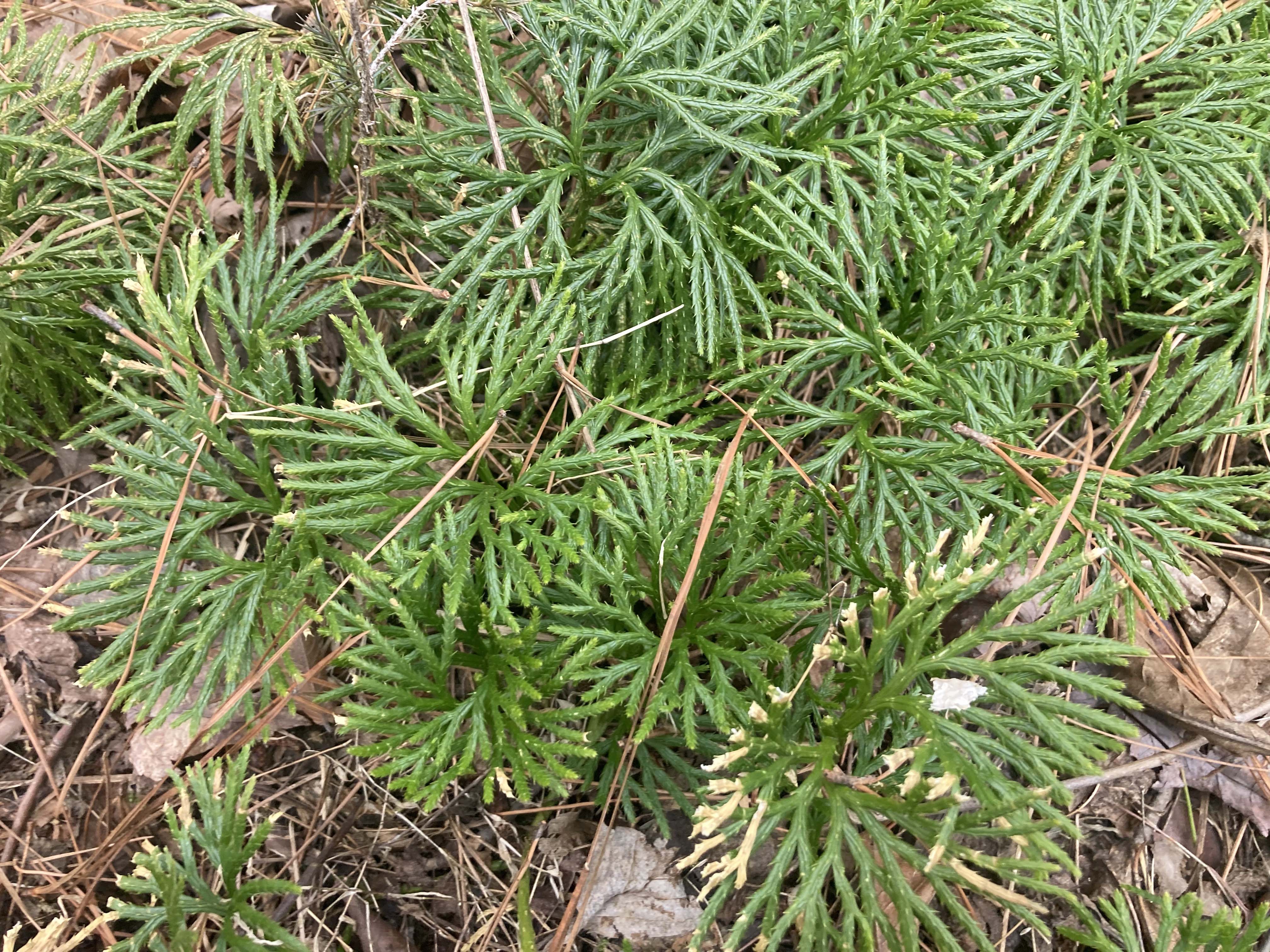Ancients Living Amongst Us
Contact
University of Arkansas System Division of Agriculture
Cooperative Extension Service
2301 S. University Ave.
Little Rock, AR 72204

Ancients Living Amongst Us
Extant: Adj. — still existing; not destroyed or lost. I was reminded of this word a couple of weeks ago while driving along an unpaved road in eastern Madison County, when I spotted an unfamiliar patch of greenery. Backing up and hopping out to inspect the 4-inch-high stand, I discovered it was a large patch of fan clubmoss (Diphasiastrum digitatum), the most common species of this ancient group of plants.
The clubmosses are closely related to — and were long considered to be a member of — the lycophytes, one of the earliest vascular land plants that first appeared in the fossil record more than 400 million years ago. The first land plants appeared about 460 million years ago. Twenty miles east and about 300 million years later, I was shown a fossil mold in a Mississippian-age sandstone rock in the Little Buffalo valley; it was of a Lepidodendron trunk from a tree-form lycophyte that could have grown over 100 feet tall. During the carboniferous era, when coal and oil deposits were being laid down and the land that is now part of the Ozarks straddled the equator, the lycophytes were among the dominant vegetation type of that ancient world.
The evergreen fan clubmoss colony I found reproduces by spores (which have their own interesting backstory) and displays its early evolutionary history by the way it grows. When the spores germinate, they live below ground as a kind of saprophytic hyphal mat for as many as 20 years before maturing enough to send up the scale-like branches and begin photosynthesizing. Eventually the colony matures enough to reproduce spores. While the tree like lycophytes are now extinct, about 400 species of smaller — but still direct — descendants are found scattered in moist, cool mountains around the world.
Another ancient group, the scouring rushes (also known as horsetails) or Equisetums, are found throughout Arkansas and much of the world. Also reproducing by spores and now considered one of the earliest kinds of ferns, these bizarre, colony-forming, joint-segmented plants that use silica to support their erect-growing stems grow in moist locations around springs and river banks. In the carboniferous era they grew to 30 feet tall with stems the size of my arm, but today most are under five feet in height with stems the size of my finger.
There are other “living fossils,” some of which are important garden plants. Ginkgo, perhaps my favorite tree, appeared in the fossil record after the catastrophic Permian extinction event that killed off more than 90 percent of the species found on earth. The first ginkgo species appeared about 270 million years ago, eventually expanding to include about a dozen species across all the land masses of the earth and then slowly disappearing until just one species remained into modern times in Asia. Without the intervention of ancient gardeners, perhaps even this species would have disappeared as well.
Inside the home, houseplants such as cycads and Norfolk Island pines (Araucaria) are also ancient plants. Cycads are related to ginkgoes as gymnosperms and date back to the early Permian period. Norfolk Island pines are amongst the earliest surviving species of true conifers and date back about 180 million years, when the first dinosaurs were appearing. About 20 species of Araucarias are known to still exist, with a dozen of these species located on New Caladenia, a crescent shaped speck in the South Seas that represents a sliver of the ancient landmass of Gondwanaland that has sunk beneath the Pacific Ocean.
There are more than 60 genera of conifers described in the world, and nearly all are in decline. Dying off. In 50 or 100 million years most will be gone, replaced by the more successful, more competitive flowering plants of today. Such is the way of the world. Nothing lasts forever, with only the rocks remaining to tell the tale of what once was.
